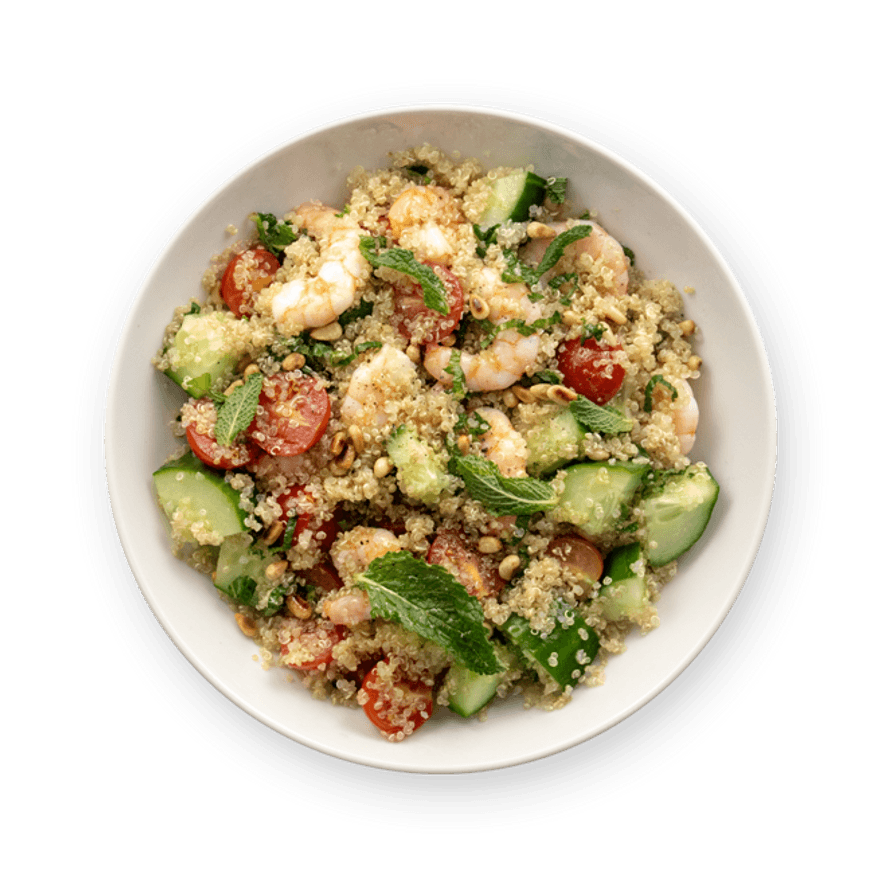Quinoa Salad with Shrimp
235 reviewsTasty, crunchy, healthy, delicious! Are you conquered? Because we are!

Ingredients
Make sure you have...
Utensils
Stovetop, Pot (small), Colander
recipe

Step 1
Rinse the quinoa for at least 30 seconds to remove the saponins, then cook it in a pot of boiling water.

Step 2
Optional: In a frying pan on medium heat, toast the pine nuts (or almond slivers) if you have any, stirring with a spatula until they're slightly golden. When they're done, put them aside.


Step 3
Wash the tomatoes and the cucumber and cut them into small cubes.

Step 4
Once the quinoa is cooked, rince it in cold water and let it drain in a sieve.







Step 5
In a large salad bowl, mix the quinoa, the vinegar, 1 tablespoon of olive oil per person, the shrimp, the tomatoes, the cucumber, the chopped mint, and the pine nuts or almond slivers if you have any, Salt and pepper to taste, and enjoy!
Personal notes
Add your own flavor!
Nutrition facts
Average estimated amount for one serving
| Energy | 323 cal. |
| Fat | 5 g |
| Carbohydrates | 41 g |
| Protein | 24 g |
| Fiber | 6 g |
Values are based on an average estimate for one serving. All nutrition information presented on Jow is intended for informational purposes only. If you have any concerns or questions about your health, please consult with a health-care professional.
On average, one serving of the recipe "Quinoa Salad with Shrimp" contains 323 Energy, 5 g of Fat, 41 g of Carbohydrates, 24 g of Protein, 6 g of Fiber.
Price per portion
| € | Nos recettes à -2 € par portion |
| €€ | Nos recettes entre 2 € et 4 € par portion |
| €€€ | Nos recettes à +4 € par portion |
Please note, the price above is dependent on your grocer and the available products in the grocery store you chose.
Scores


A Nutri-score
The Nutri-score is an indicator intended for understanding nutritional information. Recipes or products are classified from A to E according to their food composition to promote (fiber, proteins, fruits, vegetables, legumes, etc.) and foods to limit (energy, saturated fatty acids, sugars, salt, etc.).
D Green-score
The Green-score is an indicator representing the environmental impact of food products. The recipes or products are classified from A+ to F. It takes into account several factors on the pollution of air, water, oceans, soil, as well as the impacts on the biosphere. These impacts are studied throughout the product life cycle.
Retrieving reviews...


